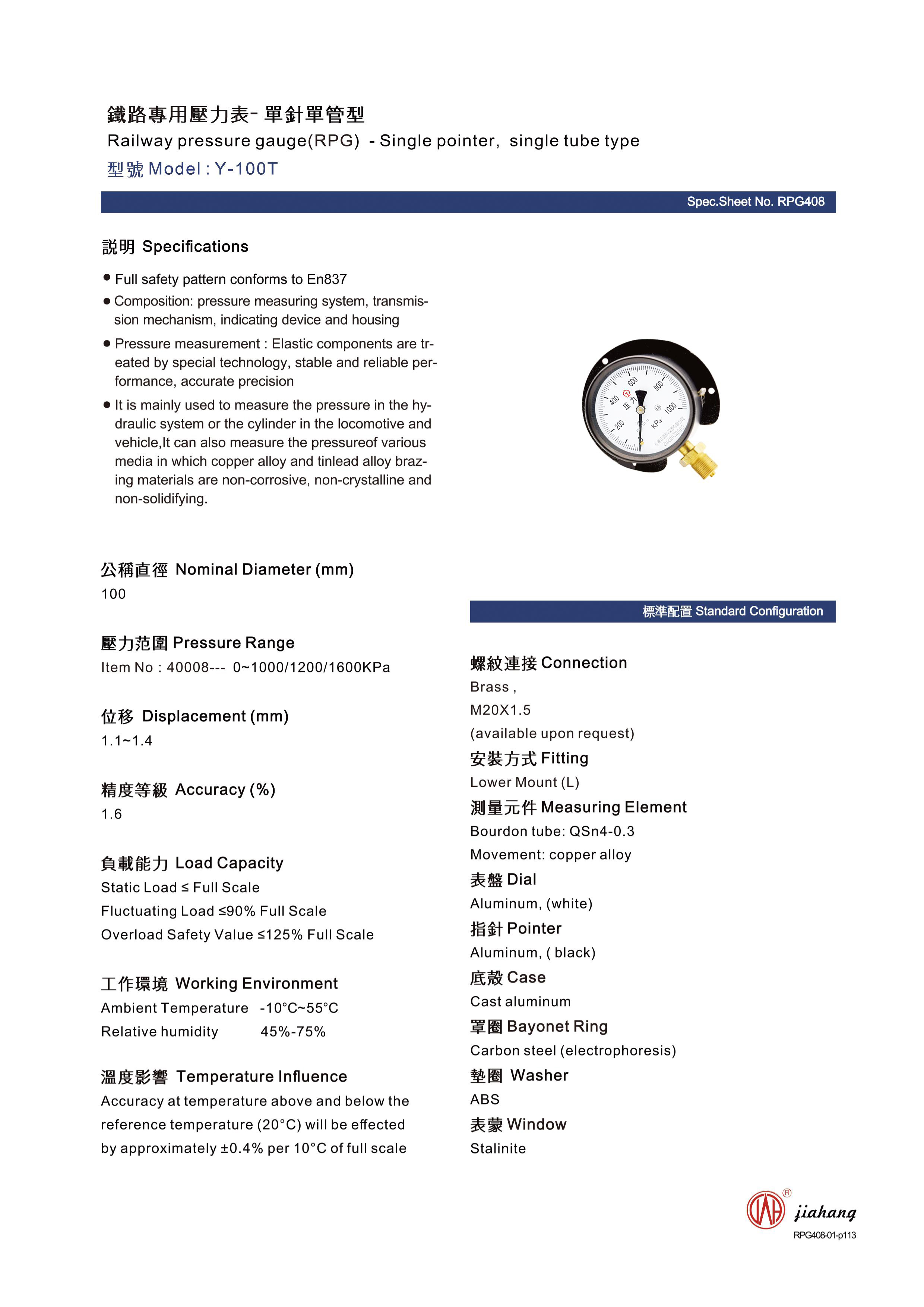
Nov . 29, 2024 21:34 Back to list
Innovative Remote Diaphragm Seal Solutions for Accurate Pressure Measurement
Understanding the Famous Remote Diaphragm Seal Pressure Gauge
In the field of pressure measurement, the remote diaphragm seal pressure gauge has gained significant attention due to its unique design and functionality. This innovative instrument is especially critical in environments where standard pressure gauges may fail or provide inaccurate readings. By understanding its components, advantages, and applications, one can appreciate the essential role it plays in various industries.
What is a Remote Diaphragm Seal Pressure Gauge?
At its core, a diaphragm seal pressure gauge consists of a mechanical pressure gauge and a diaphragm seal. The diaphragm, typically made from materials like stainless steel or special alloys, is a flexible membrane that separates the process fluid from the gauge mechanism. In a remote diaphragm seal system, the diaphragm is connected to a remote pressure gauge via a calibrated capillary tube, allowing for pressure measurements without direct contact with the fluid.
This separation is crucial for protecting the measurement device from corrosive, viscous, or high-temperature fluids that could potentially damage the gauge. The robust design ensures that the pressure readings remain accurate and reliable, even in challenging conditions.
Advantages of Remote Diaphragm Seal Pressure Gauges
1. Protection Against Corrosion and Contamination One of the most significant advantages of using a remote diaphragm seal is the protection it provides. In industries where fluids may be corrosive or contain solid particles, the diaphragm protects the sensitive components of the gauge, ensuring longevity and accuracy.
2. High Temperature and Pressure Compatibility These devices are designed to withstand extreme temperatures and pressures, making them ideal for processes like oil and gas extraction, chemical processing, and food manufacturing. The ability to handle wide-ranging conditions enhances their versatility in various applications.
3. Minimal Maintenance Requirements The closed-system design minimizes maintenance needs. Unlike traditional gauges that may require regular calibration or replacement due to wear and tear, a properly installed diaphragm seal setup requires less frequent attention, reducing downtime and associated costs.
4. Accurate Measurements The diaphragm's ability to react to pressure changes provides precise readings, allowing for enhanced process control. This accuracy is especially vital in industrial settings where even minor fluctuations can lead to significant operational issues.
famous remote diaphragm seal pressure gauge

5. Remote Monitoring Capability The design allows for the separation of the gauge from the process environment, which means operators can monitor the pressure from a safe distance. This feature is particularly advantageous in hazardous environments, improving overall safety.
Applications of Remote Diaphragm Seal Pressure Gauges
Remote diaphragm seal pressure gauges find applications across several industries
- Chemical Industry They are widely used to measure the pressure in reactors, storage tanks, and pipelines, ensuring safe handling of volatile substances.
- Oil and Gas Industry These gauges are crucial for monitoring well pressures and processing equipment, helping to optimize production while maintaining safety standards.
- Food and Beverage Industry Ensuring sanitary conditions is paramount in this sector. Remote diaphragm seals help maintain hygiene while providing accurate pressure readings in processing systems.
- Pharmaceutical Industry In a sector where precision and contamination prevention are critical, these gauges provide reliable pressure monitoring for various processes.
Conclusion
The remote diaphragm seal pressure gauge is an essential instrument in modern industrial applications. Its design effectively protects sensitive gauge components from harsh environments while delivering precise and reliable measurements. Whether in chemical processing, oil extraction, or food production, these gauges play a critical role in ensuring both operational efficiency and safety. As technology continues to evolve, the remote diaphragm seal pressure gauge will undoubtedly remain a cornerstone of effective pressure monitoring in various sectors.
-
High-Precision 5 Valve Manifold Differential Pressure Gauge Suppliers
NewsApr.29,2025
-
High-Precision Diaphragm Vacuum Pressure Gauges Manufacturers & Quotes
NewsApr.29,2025
-
Omega Differential Pressure Gauges High Accuracy & Durability
NewsApr.28,2025
-
Low Pressure Differential Pressure Gauges Precision Solutions & Quotes
NewsApr.28,2025
-
Digital Diaphragm Pressure Gaauge Precision Measurement & OEM Quotes
NewsApr.28,2025
-
Differential Pressure Gauge China Price High-Accuracy & Best Quotes
NewsApr.28,2025
